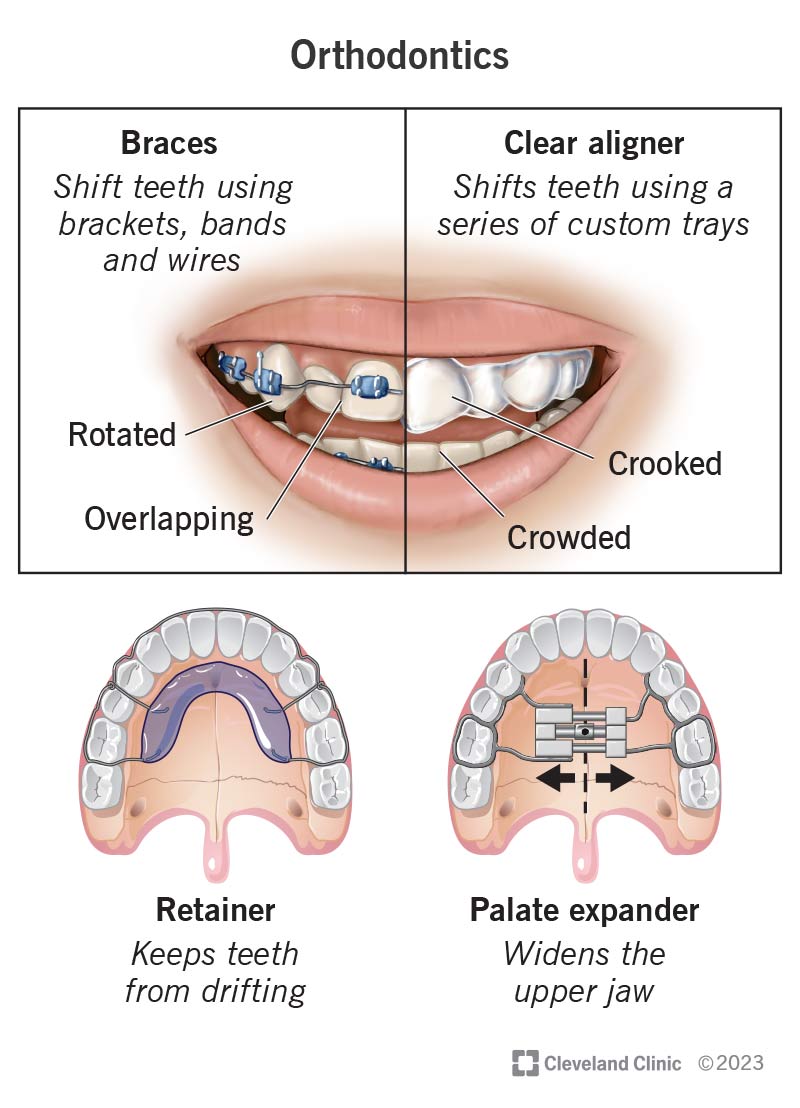How Legacy Orthodontics can Save You Time, Stress, and Money.
6 Simple Techniques For Legacy Orthodontics
Table of ContentsLegacy Orthodontics Can Be Fun For AnyoneAll About Legacy OrthodonticsLegacy Orthodontics for DummiesHow Legacy Orthodontics can Save You Time, Stress, and Money.Getting My Legacy Orthodontics To Work
In addition, we provide flexible treatment schedules, versatile settlement options and an enjoyable, delightful experience.An orthodontist is a dental professional trained to diagnose, avoid, and treat teeth and jaw abnormalities. Orthodontists function with people of all ages, from youngsters to adults.
Malocclusion, or misaligned teeth, can result in dental issues, consisting of tooth decay, gum disease, and challenging or uncomfortable chewing. Yet not everyone is birthed with straight teeth. If you have a negative bite or huge areas in between your teeth, you may intend to get in touch with a dental practitioner focusing on orthodontic treatment.
The Single Strategy To Use For Legacy Orthodontics
( Photo Credit Report: DigitalVision/Getty Images) Orthodontists utilize repaired and detachable oral tools, like braces, retainers, and bands, to change the setting of teeth in your mouth. Orthodontic treatment is for dental irregularities, consisting of: Jagged teethBite problems, like an overbite or an underbiteCrowded teeth or teeth that are as well far apartJaw misalignmentThe objective of orthodontic treatment is to boost your bite.
A healthy and balanced bite guarantees you can eat, eat, and speak properly. While you could consider orthodontists as generally for children or teenagers who need dental braces, they can correct oral problems at any type of age. Orthodontists attend university, oral college, and orthodontic school. After graduation, they invest 2 or 3 years in an orthodontic residency program.
All orthodontists are dental experts, yet not all dentists are orthodontists. Orthodontic residency programs offer intensive, focused instruction for dental professionals. They concentrate on two areas: How to correctly and safely move teeth Exactly how to appropriately assist growth in the teeth, jaw, and faceOnce an orthodontist has completed training, they have the choice to become board certified.
The Ultimate Guide To Legacy Orthodontics
Malocclusion leads to tooth congestion, a twisted jaw, or uneven bite patterns. Malocclusion is typically treated with: Your orthodontist affixes metal, ceramic, or plastic square bonds to your teeth.
Some individuals need a headgear to assist move teeth into line with pressure from outside the mouth. A retainer is a custom-made tool that maintains your teeth in location.
They're most usually used on children. They can create extra area in the mouth without having to pull teeth. If you have a major underbite or overbite, you could require orthognathic surgical procedure (likewise called orthodontic surgical treatment) to lengthen or reduce your jaw. Orthodontists utilize cables, medical screws, or plates to sustain your jaw bone.
You may need to see an orthodontist if you have: Crowding or not adequate area for every one of your teethOverbite, when your upper teeth come by your bottom teethUnderbite, when your bottom teeth are too much forwardSpacing or problems with gapsCrossbite, which is when your top teeth fit behind your bottom teeth when your mouth is closedOpen bite or an upright void in between your front bottom and top teethMisplaced midline, when the facility of your base and upper teeth do not line up Fixing an oral malocclusion can: Make biting, chewing, and talking easierImprove the balance of our face and your overall appearanceEase discomfort from temporomandibular joint conditionsSeparate your teeth and make them less complicated to cleanse, helping prevent tooth degeneration or tooth cavities It's typically a dentist that initially notifications misaligned teeth throughout a regular examination.
Legacy Orthodontics Can Be Fun For Everyone

Throughout your initial orthodontic assessment, you'll likely have: An oral examPhotos taken of your face and smileDental X-raysPanoramic (360 degree) X-rays of your face and headImpressions to develop molds of your teethThese examinations will help your orthodontist understand how to proceed with your therapy. leesburg braces. An orthodontist is a discover here dental expert who's had training to treat your teeth and jaw
An orthodontist is concentrated on your bite, so something like a chipped tooth would be handled by a dental practitioner. Orthodontists are focused on your bite, or the way your teeth fit with each other, and the straightness of your teeth.
Ever questioned exactly how stars always appear to have flawlessly straightened teeth? Orthodontists are dental specialists who concentrate on dealing with abnormalities in the teeth and jaws.
Legacy Orthodontics Fundamentals Explained

, orthodontists have a diverse toolkit at their disposal. These reliable dental braces make use of a system of brackets adhered to the teeth and attached by cords.
Clear aligners, like Invisalign, are a preferred choice for patients looking for a more discreet treatment choice. These detachable trays are personalized to progressively shift the teeth's setting. Headwear might be utilized along with braces or aligners to apply extra targeted pressures, specifically for dealing with jaw discrepancies. In cases of narrow jaws, palatal expanders can be used to produce room for proper tooth alignment.